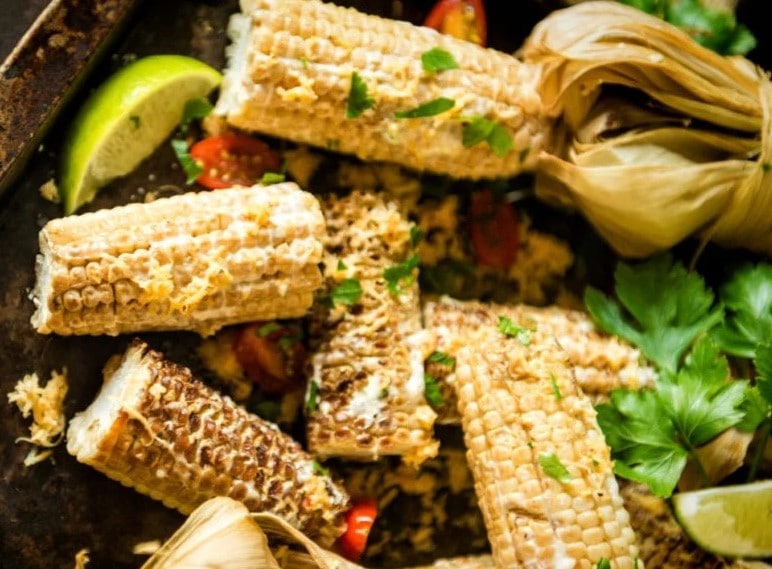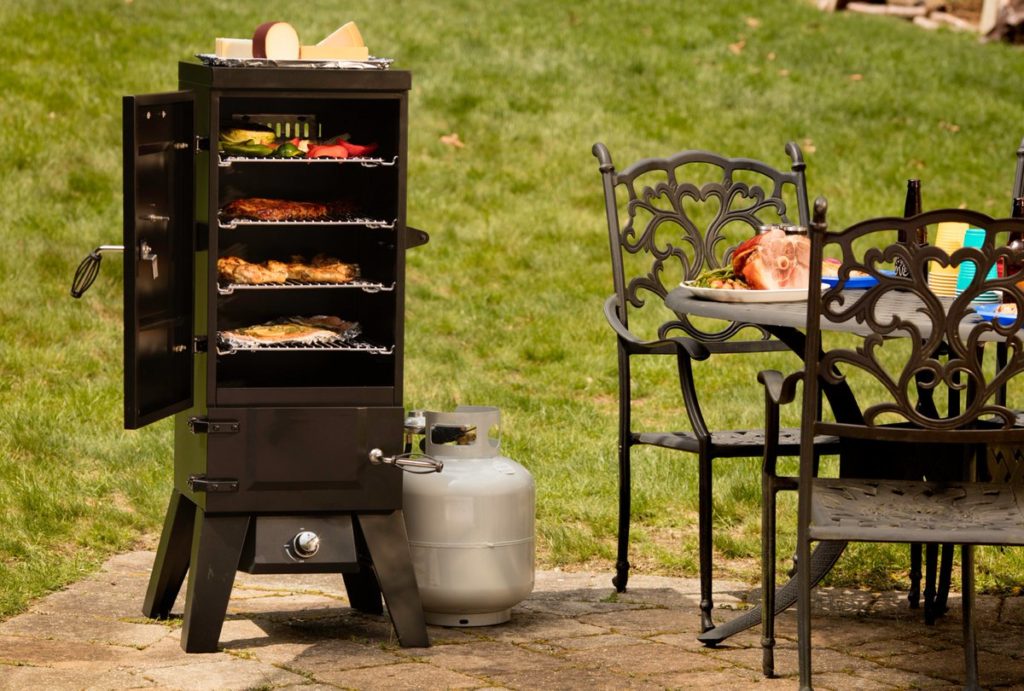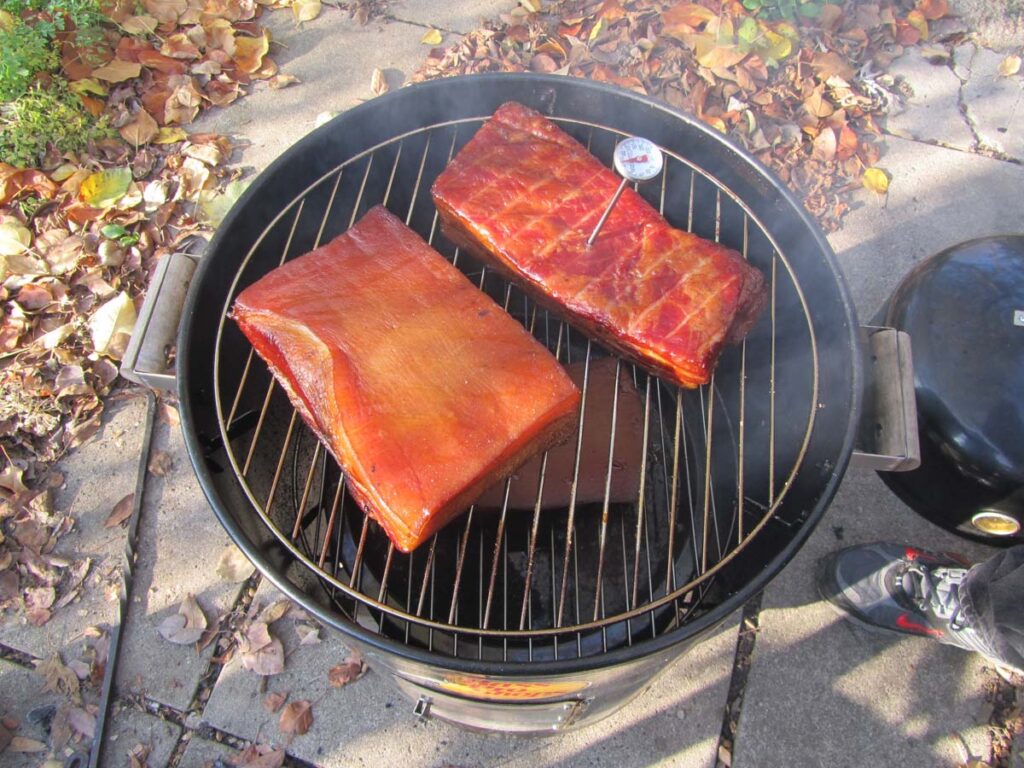

The truth is there is no brisket substitute. It’s a cut of beef that is difficult to replace. However, if for one reason or the other, you’re unable to get or use brisket for your next grilling ritual, then there are a lot of options to try your hands on.
You’ll find a lot of options if you need a beef substitute. There are also great alternatives outside of beef; many cuts of poultry and pork can also substitute for brisket. Meanwhile, if you’re a vegetarian and want to avoid beef brisket and its meat substitutes, then you’d also find a few options that you, your vegetarian guests, or customers will like.

Brisket comes in two cuts – the flat cut, which is long and thin; and the cut-off point, which typically costs less and contains more fat. Both cuts need long, slow cooking to be tender, but they have a meaty flavor that’s hard to beat.
Untrimmed or unseparated beef brisket is also usually a bargain at the butcher’s counter. It’s one of the least expensive beef cuts. You only need to separate the point from the flat with a BBQ knife before grilling.
First, when considering a brisket substitute, look for a cut of meat with similar characteristics – lots of connective tissue, rich flavor, and a relatively affordable price.
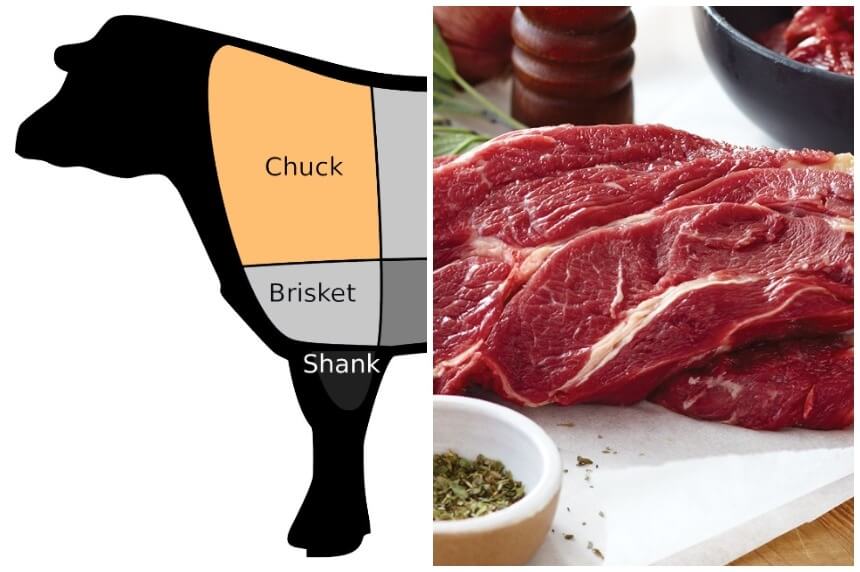
Chuck roasts can be called chuck eye roasts, chuck roll roast, chuck pot roast, or square chuck cut. Any of these cuts can substitute for the brisket. They all taste great at an affordable price.
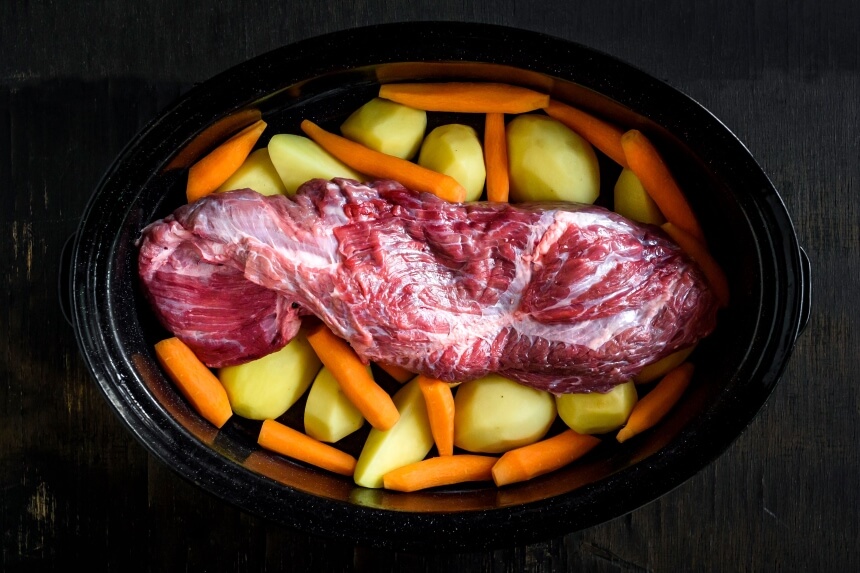

Tasty, with a very rich texture, the flank steak offers an intense flavor, without being very oily. This is one of the exceptions to the rule that economical cuts are best after slow cooking!
Rather, you need to sear it quickly and above all, not overcook it. Rather than serving it whole on the plate like a steak, it should also be presented in thin slices, which is often not an automatic reflex, with us.
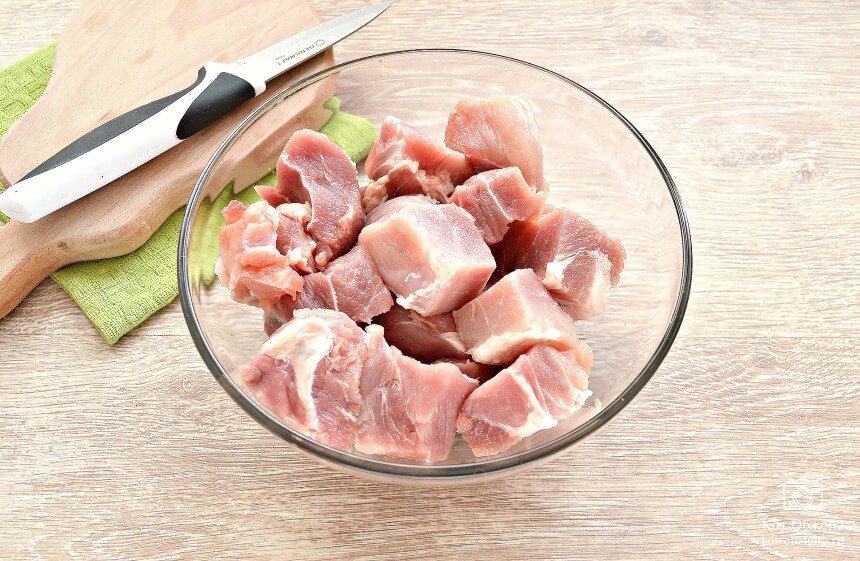
The pork shoulder is not naturally tender, has no bone in it, but is quite fatty. On the other hand, it is not complicated, practically impossible to miss (unlike the tenderloin which can easily be overcooked), and once cooked, it offers a large amount of delicious meat and with a texture that everyone likes.
The only thing we can do (but it doesn’t have to be) is to cut it into large pieces to reduce its cooking time a little.
This is the dream cut of meat to make the famous pulled pork. It’s worth making a batch and then freezing the pulled meat in portions. For a relatively cheap price, it gives you plenty of quick dinner solutions, starting with hot sandwiches and Mexican pulled pork dishes!
If possible, cook it covered, with a little liquid (water, broth, beer, wine, etc.) and spices. The time depends on the size of the pieces but can easily be 3 to 3:30. It’s ready when the meat flakes easily with a fork.
You can also chop the shoulder, cut it into cubes or cook it in the slow cooker. You should think about the pork shoulder as a brisket alternative when you have a “gang” to feed!
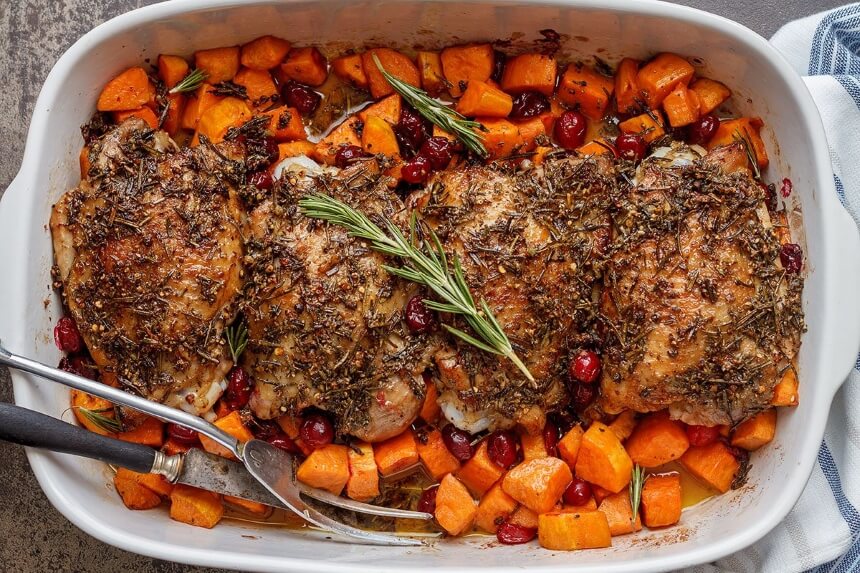
Buying whole chickens or turkeys is a better idea than always going back to the famous breasts. Except that at the same time daily, it is not always realistic. But when you need easy-to-cook pieces of chicken, thighs are not only cheaper but also tastier and less dry! And while it’s not 100% white meat, it’s also not usually dark enough to displease those who don’t like dark meat. If you want the white meat option, then chicken breasts are a good brisket option.
What’s great about chicken thighs is especially their versatility. They can be prepared in almost any way: braise, sauté, marinate them, or prepare them in the slow cooker, add them to a pâté, a stew, or a soup. They can thus replace all the uses that you would make with the brisket.
In addition to the classics mentioned above, you can discover many other forms of imitation of meat products.
It is not for nothing that it is also called “vegetable meat”! Its texture is similar to that of meat, and it can be replaced in a recipe that involves the use of brisket meat.
Traditionally used for centuries in Asia, seitan can now be found in commerce in various forms and can even be made at home.
Good for health, nutritious, economical, and ecological, legumes deserve to win back our meals! They are a good source of protein, iron, calcium, fiber, and potassium.
Red, white, black beans, flageolets, broad beans, chickpeas, dried and split peas, mung beans (or green soybeans), cowpeas, lupines, green lentils, and more, legumes are available in dry form, but also ready for consumption in cans, jars and some are also found in the frozen section (especially beans and flageolets).
Made from soybeans – a precious food packed with nutrients – tofu and tempeh are the ingredients of choice for vegans craving briskets. They are used in the same way: you just have to cut them into the desired shape (slices, cubes, or even chopped), then cook them or add them directly to your recipe.
If you are new to these products, we recommend that you try flavored tofus first. Already prepared and seasoned, they are ready to be tasted. With basil, wild garlic, smoked, almond-sesame, with olives… there is something for everyone!
A full brisket is difficult to find, especially outside of the state of Texas, but you will find several suitable alternatives at the butcher’s counter. Most of these alternatives are smaller than a brisket – probably in the 4–8-pound range. You can buy two or three to make up the difference and be sure to calculate the shrinkage. Fatty cuts of meat can reduce by up to 50 percent during cooking, but their rich flavor makes up for any waste.
Like brisket, chuck and bottom round roast are versatile cuts of meat that can serve as brisket substitutes and be used in a variety of ways. You can smoke them – just like brisket – for a barbecue or use them to make corned beef. Add the pearl onions and carrots to the beef stew pot to the hearty casserole, or braise with cider vinegar, tomato sauce, and brown sugar for a tangy side dish.
